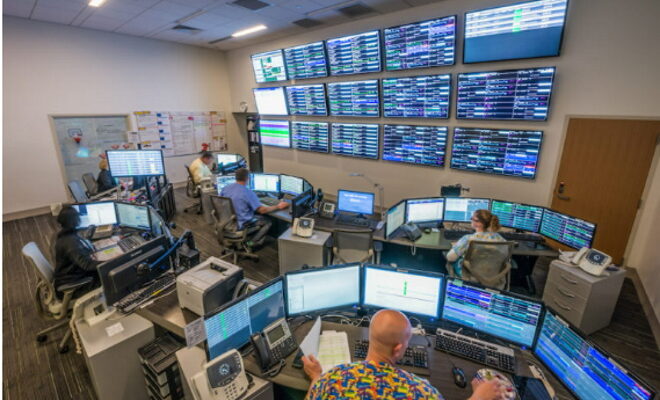
Health x Wellness
Building an endemic-resilient healthcare system
The impact of Covid-19 placed a significant strain on health systems across the Asia-Pacific region. Now the Omicron variant poses an even higher risk of infection surges that could have severe consequences on our healthcare system.
This has led to a flood of Covid-19 patients seeking treatment in the accident and emergency (A&E) department, putting a strain on the already thinning resources and strained manpower.
In March, Singapore reported that out of every 100 A&E patients that were admitted into hospitals, 20 percent were admitted for incidental Covid-19 diagnosis, while the remaining patients had long-term chronic diseases that required medical attention. With many medical practitioners pre-occupied with managing Covid-19 cases, their remaining patients continue to struggle with the worsening chronic medical conditions. This, coupled with increasing resignation rates among healthcare professionals, has increased demand for healthcare resources. Growing healthcare inequities has also added more pressure to the healthcare system.
The good news is help is just around the corner. With the adoption of technology, digital capabilities such as telemedicine can play an incremental role in addressing the healthcare industry’s ongoing challenges. Overtime such solutions will reinforce a robust and sustainable health system that benefits both patient and healthcare professionals.
Enhancing healthcare operation efficiency
The use of video technology in Singapore’s healthcare industry is not actually new. Based on the main spike in the adoption we have recently observed, these solutions with new advanced capabilities are helping improve operational efficiency and resilience. The advancement of video technology has also provided increased usage that go beyond containing the effects of Covid-19. It is now being used to help design the future of healthcare.

An example of this is the integration of VMS with thermal imaging cameras, which has been exceptionally helpful as a frontline tool in the fight against Covid-19. By combining VMS with thermal and infrared capabilities, officials were able to quickly identify, test, and if needed isolate unwell individuals to mitigate the risk of spreading the disease. This also enabled effective social distancing management in public areas by recognising congested areas with thermal mapping, limiting long lines at hospitals with queue management, and managing crowds in common areas such as waiting rooms. By using such technology, hospital staff were able to redirect the extra manpower and talent towards patient care.
Security is another factor that is often overlooked. Traditional closed-circuit television (CCTV) cameras are insufficient in monitoring the multiple facilities in a hospital. With numerous visitors to manage daily, hospitals can rely on VMS to help control access of their facilities.
For example, the open-platform VMS can be setup to manage access and automatically open and close doors, gates, and other access points, allowing staff to better manage access to critical facilities such as Intensive Care Units (ICU). Staff would also no longer be required to manually check in every doctor or nurse that enters the facility, but instead rely on the open-platform VMS coupled with facial recognition to identify authorised individuals from a pre-defined list. This would lead to a reduction in the number of unnecessary interactions between patients, staff, or visitors in the hospital.
With deep learning technology, the use of such innovations could not only help hospitals and medical facilities to provide better healthcare, but also maintain social distancing for operations to continue safely.
Improved patient care
The use of AI, data analytics and VMS has the potential to enhance patient care and engagement within the healthcare industry. AI-enabled clinical decision support systems will improve diagnosis, treatment, and prognosis of selective medical conditions, by predicting the probability of a medical outcome or the risk of certain diseases.
VMS is already being used to enhance patient care. The software, which has been deployed in Nemours Children’s Hospital in Orlando, Florida, provides hospital staff with real-time information, allowing doctors and nurses to conduct their patient rounds remotely.
Aside from Covid-19 related support, more companies are exploring the capabilities of AI in healthcare aimed at assisting caregivers and volunteers looking after senior citizens that live alone. Through the combination of AI-enhanced video and sound analytics, technology would have the capability to detect human falls, as well as pick up cries and screams for help. Caregivers would then be sent an alert, allowing them to respond and attend to incidences immediately.
By leveraging the benefits of the open platform VMS, healthcare providers are more equipped to protect the health and well-being of their staff, patients, and the public.
Building a future-proof healthcare system
The potential of VMS has barely scratched the surface for the healthcare industry. Current use cases of VMS integrated with advanced technology have already proven beneficial towards improvement of the decision-making process on the clinical, operational, and managerial levels.
Moving forward, it is evident that the healthcare industry must evolve, especially after facing immense pressure due to the pandemic. To start building a more resilient, agile, and innovative infrastructure, there needs to be greater adoption of data-driven approaches that incorporate powerful video analytics, for enhanced patient care and operational efficiency.
Article contributed by Malou Toft, Vice President, Asia Pacific, Milestone Systems
Images credit to Milestone Systems






